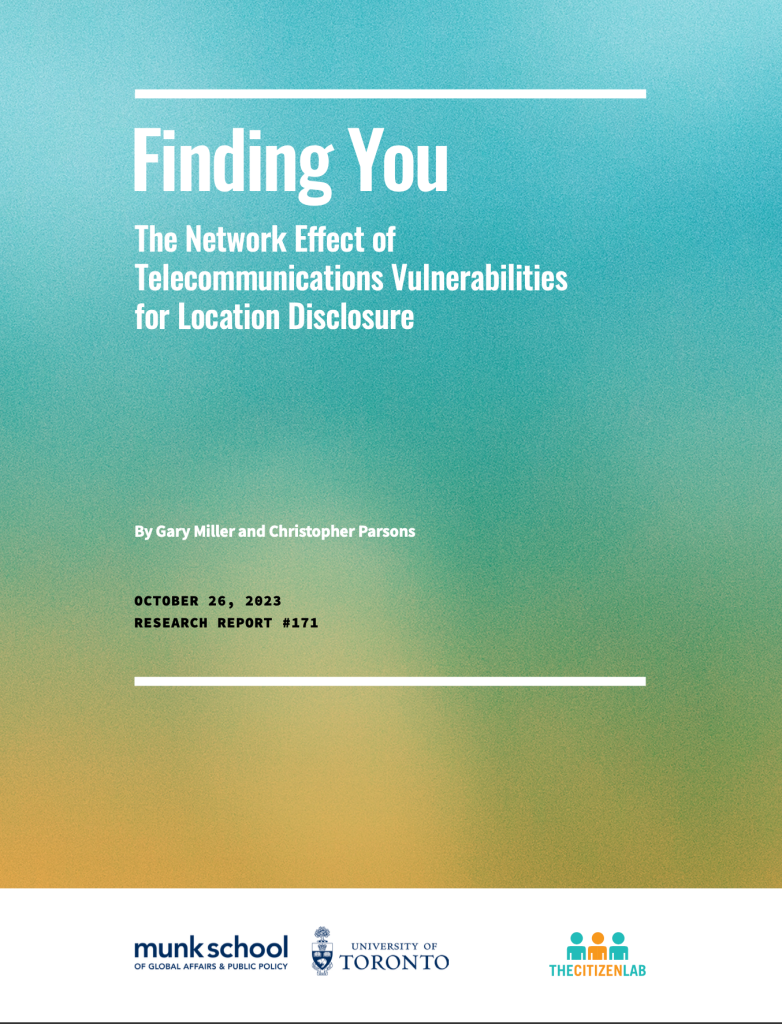
Last week, I published a report with Gary Miller and the Citizen Lab entitled, “Finding You: The Network Effect of Telecommunications Vulnerabilities for Location Disclosure.” I undertook this research while still employed by the Citizen Lab and was delighted to see it available to the public. In it, we discuss how the configuration and vulnerabilities of contemporary telecommunications networks enables surveillance actors to surreptitiously monitor the location of mobile phone users.
The report provides a high-level overview of the geolocation-related threats associated with contemporary networks that depend on the protocols used by 3G, 4G, and 5G network operators, followed by evidence of the proliferation of these threats. Part 1 provides the historical context of unauthorized location disclosures in mobile networks and the importance of the target identifiers used by surveillance actors. Part 2 explains how mobile networks are made vulnerable by signaling protocols used for international roaming, and how networks are made available to surveillance actors to carry out attacks. An overview of the mobile ecosystem lays the foundation for the technical details of domestic versus international network surveillance, while the vectors of active versus passive surveillance techniques with evidence of attacks shows how location information is presented to the actor. Part 3 provides details of a case study from a media report that shows evidence of widespread state-sponsored surveillance, followed by threat intelligence data revealing network sources attributed to attacks detected in 2023. These case studies underscore the significance and relevance of undertaking these kinds of surveillance operations.
Deficiencies in oversight and accountability of network security are discussed in Part 4. This includes outlining the incentives and enablers that are provided to surveillance actors from industry organizations and government regulatory agencies. Part 5 makes clear that the adoption of 5G technologies will not mitigate future surveillance risks unless policymakers quickly move to compel telecommunications providers to adopt the security features that are available in 5G standards and equipment. If policymakers do not move swiftly then surveillance actors may continue to prey upon mobile phone users by tracking their physical location. Such a future paints a bleak picture of user privacy and must be avoided.



